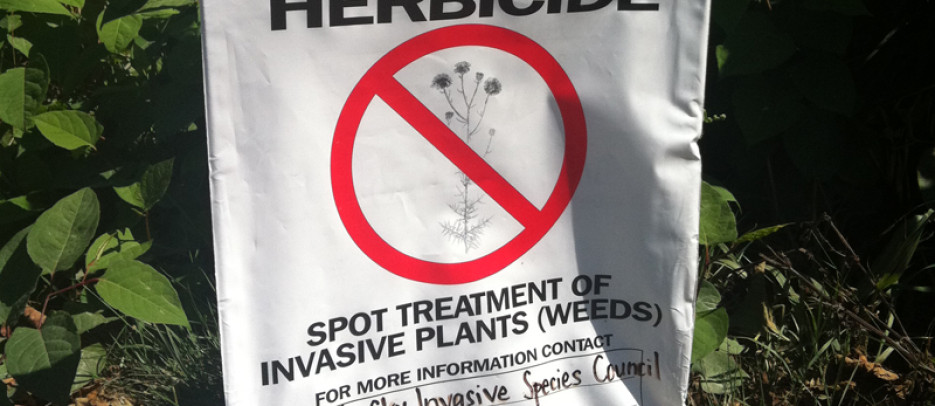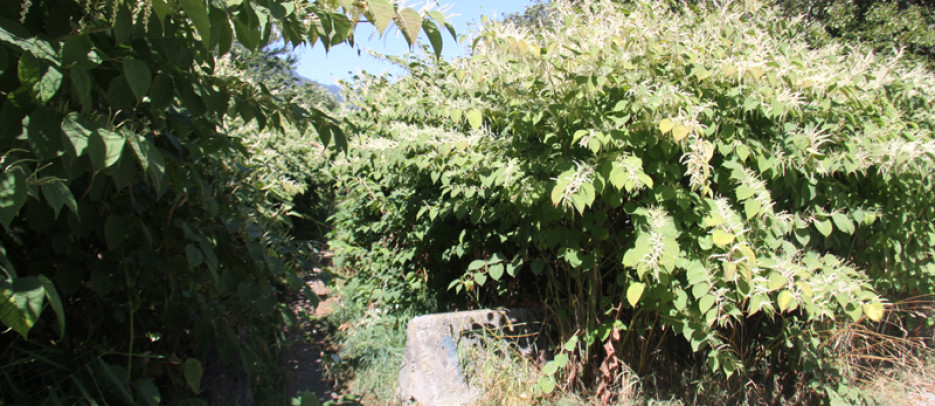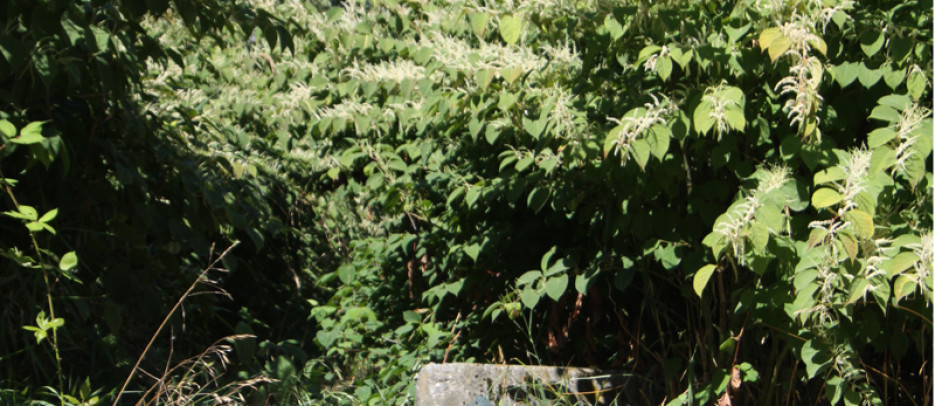Japanese Knotweed Herbicide Treatments
The Sea to Sky Invasive Species Council (SSISC) undertakes a control program for Japanese Knotweed (Fallopia japonica), in partnership with various landowners including the District of Squamish. The control program is applied at sites throughout the Sea to Sky Corridor.
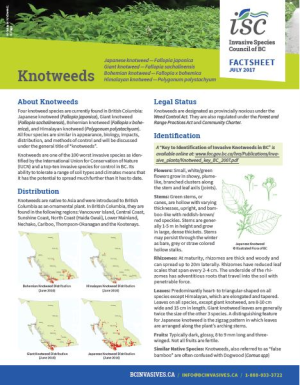
Japanese Knotweed is an invasive species that can produce a new plant in as little as six days and can reproduce from as little as 1 gram (approximately 1 x 1 cm) of plant or rhizome material. It is very difficult to manually control the spread of this species, and can have potentially devastating impacts on riparian areas or infrastructure. Digging and cutting this plant is ineffective and can aid in the spread. In strategic locations where Japanese Knotweed is threatening sensitive habitat or infrastructure, plants are treated with herbicides, including glyphosphate formulations.
Himalayan blackberry is addressed by manual removal methods at selected sites, and is not treated with herbicide control.
Herbicides are spot-sprayed or stem-injected
- Choice of treatment methods and type of herbicide is dependent on many factors. Protecting the environment and human health is paramount. SSISC follows species-specific best management practices, and integrated pest management standards. All field staff are certified pesticide applicators, and all local provincial and federal regulations pertaining to herbicide use are followed.
- The amounts of herbicide used for invasive plant control is very small, and the way they are applied is selective. They are applied by spot spraying with hand held sprayers and backpacks, and stem injection for some species. Broadcast applications are not used.
- Invasive Plant management requires an integrated approach, with herbicides being just one tool in the toolbox, though an important one. SSISC only uses herbicides at sites, and for species, where manual removal, cultural control and/or biocontrol, are ineffective, and/or not feasible.
- Invasive species removal and control are the only instances where herbicides are used. Signage clearly marks any areas that have been impacted. The District does not deploy herbicides for any parks or public works purpose.
Signage clearly identifies treated areas
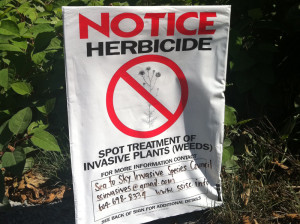
Signage is posted at all herbicide treatment sites for two weeks after plants have been treated. It is recommended that people and animals stay out of the treated area for 12 hours.
Health Canada regulates pesticide use
Health Canada regulates pesticides to protect Canadian's health and the environment, and regularly reviews all pesticides to make sure that they continue to meed modern health and safety standards. View a January 2019 statement from Health Canada on Glyphosate.
Additional Info
The BC Invasive Species Council site has information on extensive impact that knotweeds can have on a community, and the methods used to control them.
